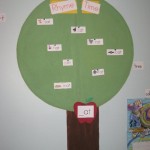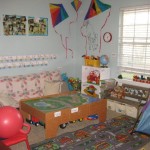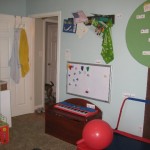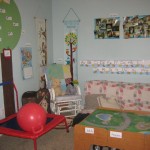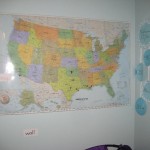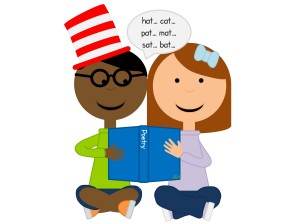What do you do when you have a friend who is an awesome mom, is super creative, and she shares her ideas with you, you share her ideas with everyone right?!?
Well, if you read my post “Read the Playroom” then you know how much I LOVED this: Look at the pictures and notice a few things…. 1) She has a print-rich room with a lot of the objects labeled and the room is a great place to be active and still function as a learning environment. Loving this! She has a rhyming tree and this is what she says about it:
“I saw the idea when I googled ‘playroom’ and someone had this as a bulletin board and I just made it specifically for rhyming. Anyway, this was super cheap to make! $15 for a roll of cork at Hobby Lobby (get it when it goes on sale for 50% or go online to print a 40% one item coupon and it’s even cheaper). Stuck it to the wall using double sided hanging tape, then at the Dollar Tree, bought a foam board for $1, cut it in half for the trunk. $0.99 for each bottle of paint at Hobby Lobby… I used 1 dark brown for the trunk, and 2 foliage green for the tree, printed off the words and used clip art from MS Word…. made this tree for under $12.
When I typed up the words on the computer, the first sound of the word I used a different color, and then all of the “at” rimes I used black so James can see that the ENDING sound is the same and the beginning is different.
I am working on putting a mailbox near the trunk of the tree that will hold letters of the alphabet so we can pull one letter out at a time and make a rhyming word, most will be nonsensical of course, but it will add to the fun of rhyming!”
Casey has a pre-k blog called http://prekplease.blogspot.com/ and her incredible kidspired creations are too cool to pass up!
If you get a chance to do a spin-off of the rhyming tree activity, please share it with all The Mommy Teachers!
Update from Casey: “The Dollar Tree had word strips (solid line at the top and bottom, dashed line in the middle) $1 for 30 so that I could label everything in the room.”

